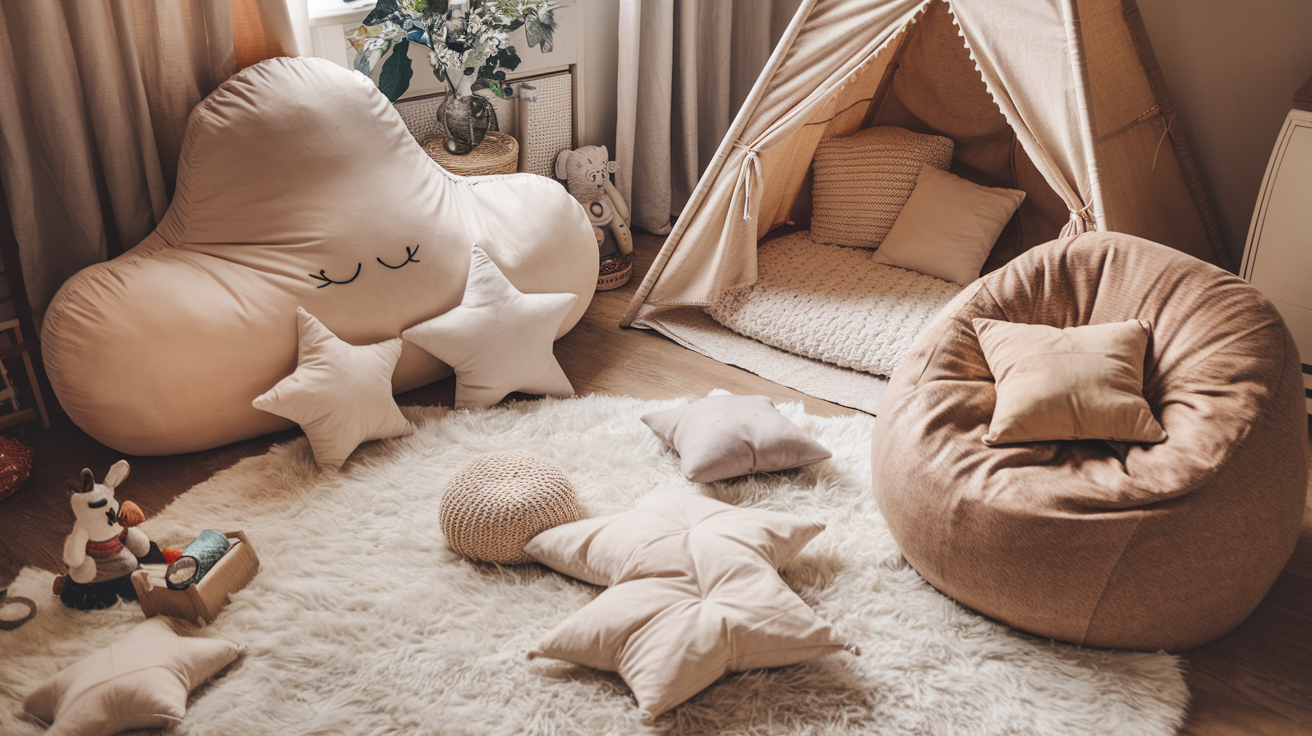10 Creative Ideas for Kids Room Design
This site contains affiliate links. I may earn a small commission, at no extra cost to you.
So, your kid’s room looks like a tiny tornado hit a toy store? Same. Whether you’re planning a full-on makeover or just trying to create a space your little one won’t destroy in under five minutes, welcome. Let’s talk kids room design ideas—but not the boring, copy-paste Pinterest kind. I’m talking about fun, functional, and actually doable stuff that won’t cost you a kidney or your last shred of patience.
I’ve designed a few kids’ rooms (read: survived the chaos), and let me tell you—a little creativity goes a long way. These 10 creative ideas for kids room design will help you balance wild imaginations with real-world messes. Ready to give their room some personality and purpose? Let’s go.
1. Themed Rooms That Spark Imagination
Let’s be honest—every kid goes through that phase. Dinosaurs, astronauts, mermaids, unicorns… the obsession is real. Why not lean into it?
Create a room that matches their current obsession (and don’t worry, we’ll make it flexible enough to update later when they suddenly decide they’re “too grown-up” for outer space at age seven).
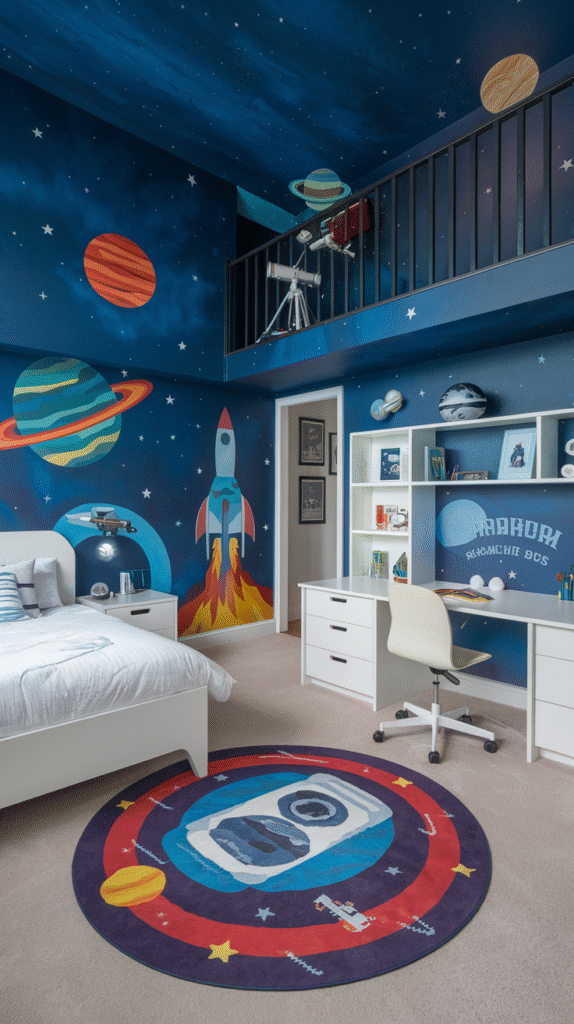
Try this:
- Paint one accent wall with chalkboard paint for doodling galaxies or dino tracks.
- Use removable wall decals (trust me, your future self will thank you).
- Choose bedding, rugs, or lampshades that tie in the theme without committing to a full-blown remodel.
Why it works: Kids feel like the space is theirs, which makes them actually want to spend time in it—imagine that.
Ever seen a kid’s eyes light up when they see a rocket bed? Yeah. Pure magic.
2. Multi-Functional Furniture (Because Space Is Precious)
Let’s face it: kids accumulate stuff faster than you can say “clean your room.” That’s where multi-functional furniture becomes your best friend.
What to look for:
- Storage beds with built-in drawers or cubbies.
- Bunk beds with a desk or play zone underneath.
- Ottomans or benches that double as toy chests.
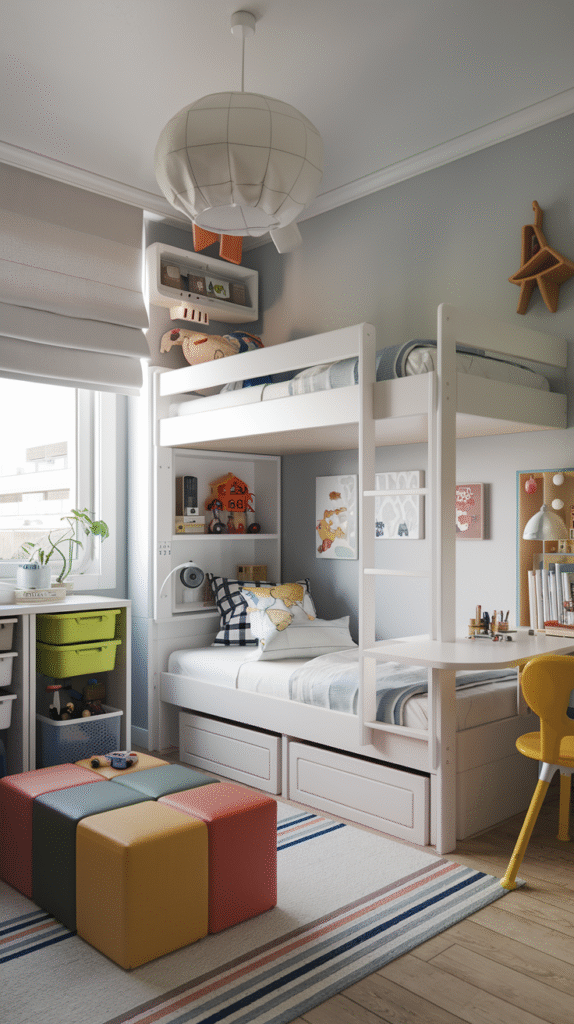
Why it’s genius: You save space and make clean-up easier (read: more likely to happen… maybe).
FYI: IKEA is practically a goldmine for this. Just be prepared to lose three hours and question all your life decisions while wandering through.
3. Interactive Wall Features
Walls don’t have to be just… walls. Turn them into an activity zone that doesn’t involve screens (gasp).
Ideas that work like magic:
- Magnetic paint for a DIY magnet board.
- Corkboard strips or a pin-up gallery for their masterpieces.
- A height chart decal so they can brag about growing 1.2 inches overnight.
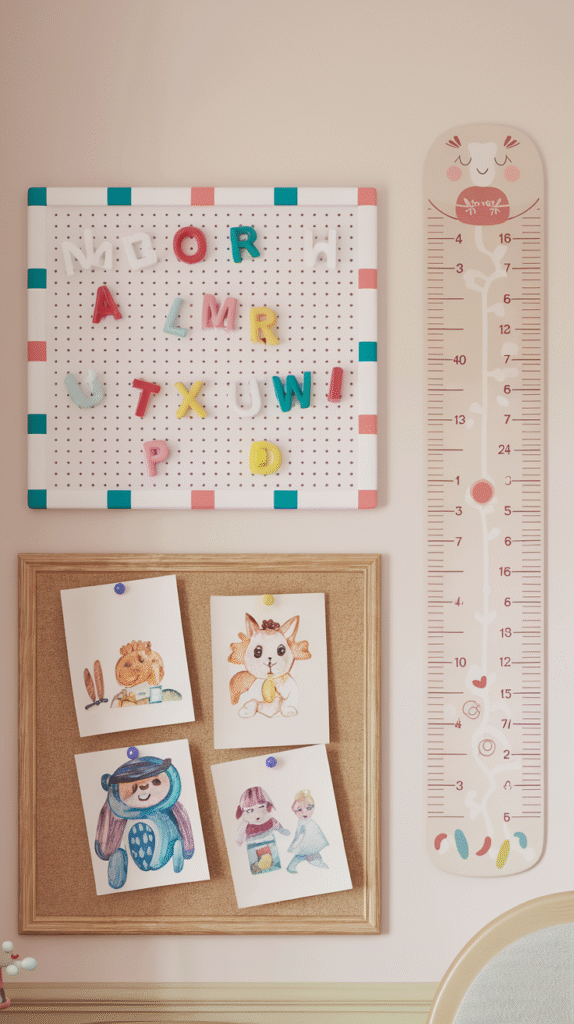
Bonus: You’ll save your fridge from drowning in glittery construction paper.
Ever wondered why kids scribble on walls? Because they’re bored. Give them a legal wall to mess with, and boom—problem solved.
4. Creative Storage That Doesn’t Scream “Storage”
Tired of tripping over LEGO bricks? Same. But instead of tossing everything in a plastic bin and hoping for the best, try clever storage that blends into the room design.
My top hacks:
- Use color-coded bins with pictures for younger kids. Sorting becomes a game (sometimes).
- Hang labeled canvas bags on wall hooks—great for plushies or books.
- Stack crates or cubbies in funky shapes for an artsy vibe.
Why it’s smart: It looks intentional but still gets the clutter off the floor. Win-win.
5. Let the Kids Help Design (Scary but Worth It)
I know, I know—you just flinched. Giving your kid design control sounds like a disaster in the making. But here’s the thing: when they help plan their space, they take more pride in it.
Try this compromise:
- Let them choose the color palette from 3 pre-approved options.
- Give them ownership over a “corner” (reading nook, art wall, etc.).
- Let them make a vision board (yes, even toddlers can point at magazine clippings).
IMO, this tiny bit of freedom makes a huge difference in how much they care about keeping their room nice… or at least not turning it into a war zone daily.
6. Zones: Because Structure Saves Your Sanity
Newsflash: Kids thrive on structure, even if they say they hate rules. (Spoiler: they don’t.)
Creating zones in their room helps them focus and also sneakily teaches them organization.
Break the space like this:
- Sleep Zone: cozy bed, soft lighting, no toys.
- Play Zone: toy storage, open floor space, durable rug.
- Study Zone: small desk, shelves, task lighting.
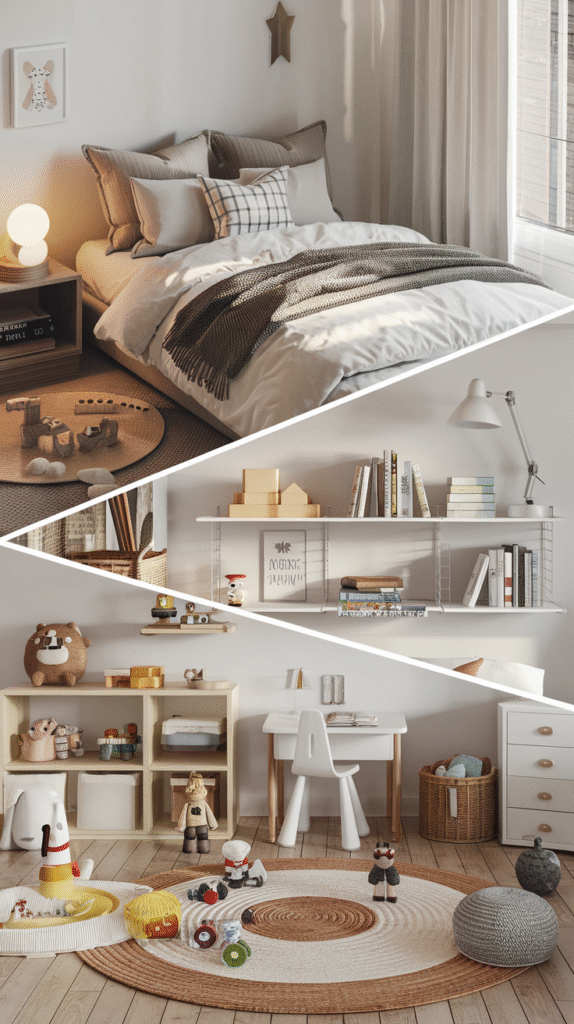
Why it’s brilliant: They’ll know what to do where—and you’ll stop finding snack crumbs in their homework pile. Probably.
Ever tried doing math homework on a beanbag next to a pile of LEGOs? Exactly.
7. Mood Lighting for the Win
Lighting is wildly underrated in kids rooms. You don’t need a fancy chandelier—just a few thoughtful options to match their daily vibe.
Mix these in:
- A dimmable bedside lamp for nighttime wind-downs.
- Fun string lights or LED strips for cozy vibes.
- A reading lamp or clip-on light for study time.
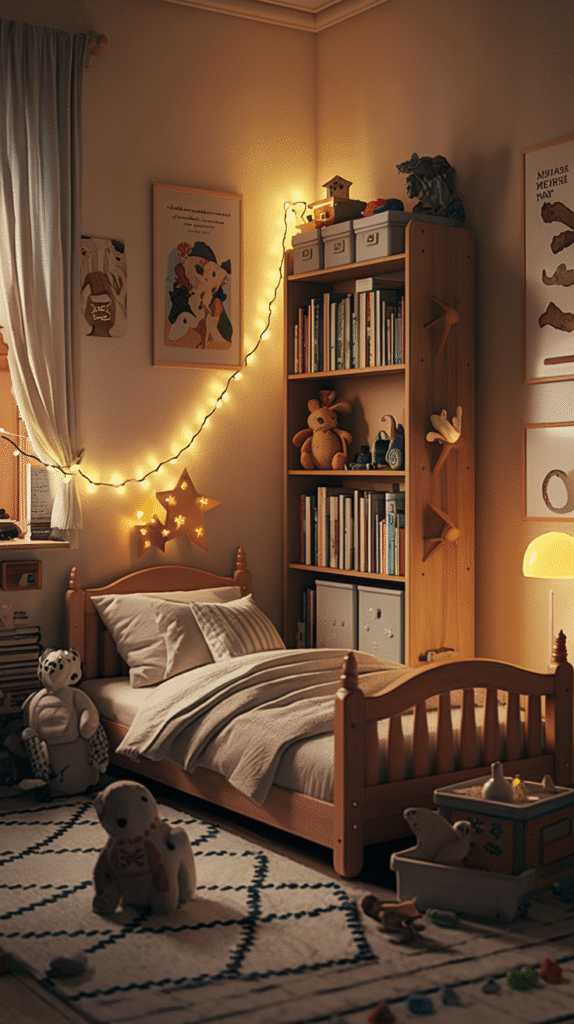
Pro tip: Go for smart bulbs if you want to control things from your phone. Because climbing out of bed to turn the lights off after a bedtime tantrum? No thanks.
8. Bold Colors + Pattern Play (But Keep It Balanced)
Kids love color. Like, a lot. But before you hand them a paintbrush and walk away, here’s the trick: use bolds strategically.
Here’s how to make it work:
- Stick to 1–2 bold hues and balance them with white, beige, or grey.
- Use patterns—stripes, polka dots, animal prints—but keep scale in check.
- Go bold on a rug, curtains, or bedding, and let the walls stay chill.
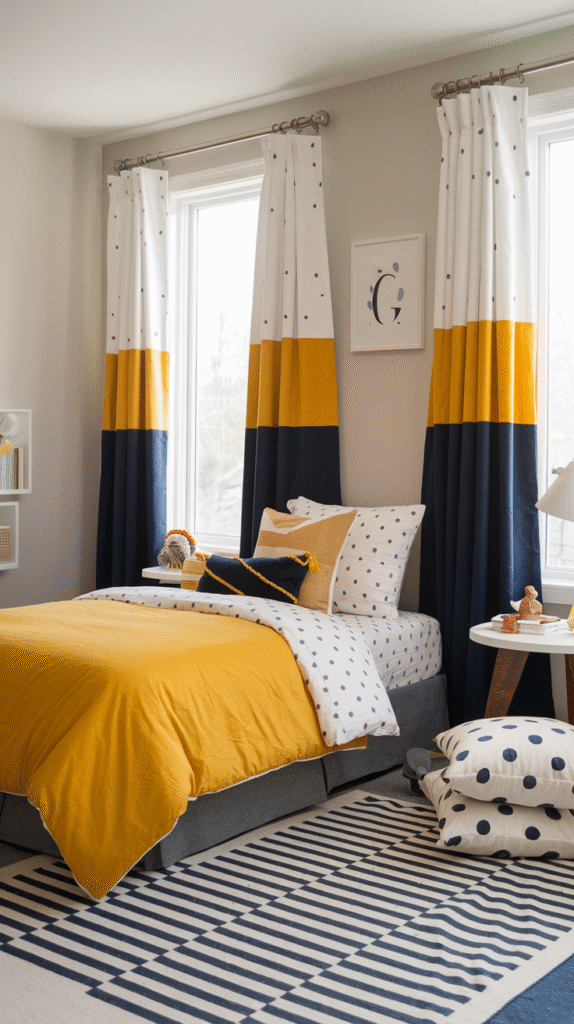
Why it works: It stimulates creativity without turning their room into a rainbow explosion.
Honestly, nobody needs neon green walls unless you’re raising a glow stick.
9. DIY Decor That Grows With Them
Don’t spend big bucks on wall art they’ll hate in six months. Instead, go for DIY or customizable decor that evolves with their interests.
Fun and affordable options:
- Frame their artwork in rotating gallery-style clips.
- Hang a wire with clothespins to display photos or crafts.
- Use washi tape to create wall patterns that are easy to change.
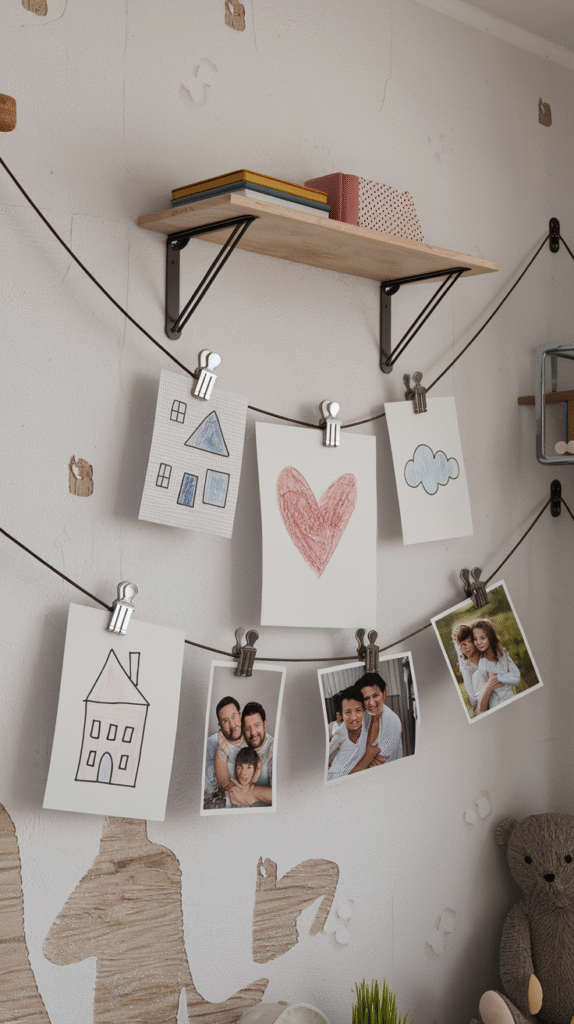
Why it’s fun: They can switch it up anytime—without you repainting every year.
And hey, you get major cool parent points when they see their own art hanging proudly.
10. Comfort is King: Soft Furnishings FTW
Sometimes, we focus so hard on making the room look good that we forget: it should also be super comfy.
Load up on:
- Cushions in fun shapes (clouds, stars, animals).
- A beanbag or kid-sized lounge chair.
- Soft rugs (shaggy or foam-padded—whatever works for bare feet and tumble sessions).
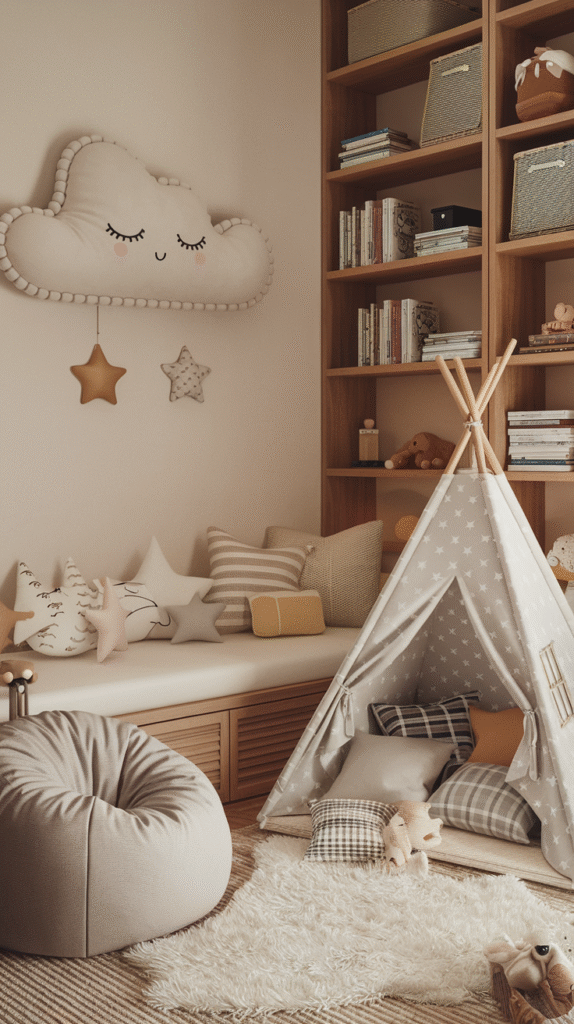
Why it matters: A cozy room invites downtime. And trust me, a kid who naps in their room instead of the living room = ultimate parenting win.
Ever curled up in a kid’s teepee filled with cushions? 10/10 recommend.
Final Thoughts: A Room That Grows With Them (And You)
Designing your child’s room isn’t just about pretty walls and cute pillows—it’s about creating a space where they feel safe, inspired, and, ideally, less messy. Keyword ideally 😅.
The best part? These creative kids room design ideas aren’t just for now. You can tweak and update them as your child grows—without starting from scratch every year.
So take a deep breath, grab some color swatches, and maybe even let your little one join the process (bravely, of course). You’ve got this!
And hey—if your kid actually keeps it tidy for a whole week? Go ahead and reward yourself with cake. You’ve earned it.
FAQs About Creative Kids Room Design
How do I design a kids room that grows with them?
Great question—and honestly, that’s the dream, right? You can design a flexible kids room by keeping the big stuff (like furniture and paint colors) fairly neutral, and switching up accessories, bedding, or wall art as their interests change. Think of it as the “capsule wardrobe” of room design.
Pro tip: Use removable wall decals, easy-to-change textiles, and multipurpose furniture to keep things low-stress (and low-cost) as they grow.
What’s the best color scheme for a child’s bedroom?
There’s no one-size-fits-all, but here’s the scoop: stick to a base of soft neutrals or pastels, and layer in bolder accent colors through decor. This way, the room feels playful without looking like a circus tent exploded.
FYI: Blue, green, and yellow are popular choices that offer a cheerful vibe without being too overstimulating.
How can I make a small kids room feel bigger?
Ah yes, the classic “my kid has more toys than square footage” dilemma. You can fake space with a few clever tricks:
- Use light colors on walls to open up the room.
- Choose low-profile or multi-functional furniture.
- Add mirrors or reflective surfaces to bounce light around.
Storage is key, too—look for under-bed drawers or wall-mounted shelves to keep clutter off the floor.
Should I involve my kid in designing their room?
Honestly? Yes. A little input can go a long way. Let them help choose colors or pick out their bedding (within your pre-approved range, obviously). When kids feel ownership, they’re more likely to actually use and care for their space. Shocking, I know!
Just don’t let them convince you that slime-green walls are “timeless.” Trust your gut.
What type of lighting is best for a kid’s room?
Layered lighting is your best friend. Use a mix of:
- Ceiling lights for general brightness
- Reading lamps near the bed or desk
- Soft, cozy lights like string lights or nightlights for winding down
Bonus points if you use dimmable or smart bulbs so you’re not stuck doing the bedtime light switch shuffle.
How do I organize all their toys (without losing my mind)?
Oh, the eternal battle. Try these sanity-saving strategies:
- Use cubbies or baskets with labels (pictures help younger kids)
- Rotate toys in and out to avoid sensory overload
- Encourage daily clean-up routines (even if it’s only 30 seconds long 😅)
The goal: Make storage easy enough that even a toddler can do it (or at least try to).
Is a themed room a good idea, or will they grow out of it?
Themed rooms are fun—until your dinosaur-loving toddler wakes up one day obsessed with astronauts. The trick? Go semi-themed. Use themed decor (pillows, prints, rugs), but keep big-ticket items neutral. That way, when the obsession changes, you’re only swapping accessories—not furniture or paint.
IMO, this saves both money and parental sanity.

